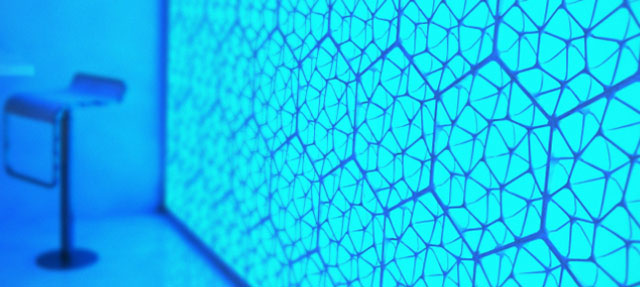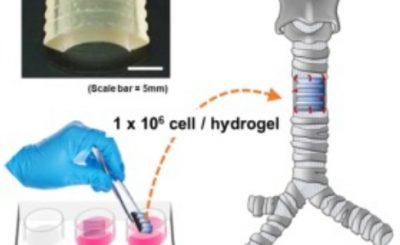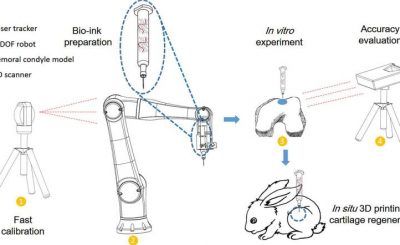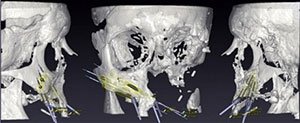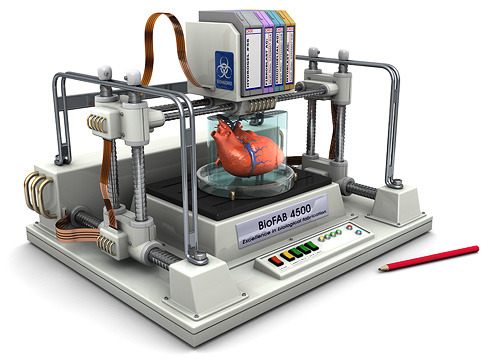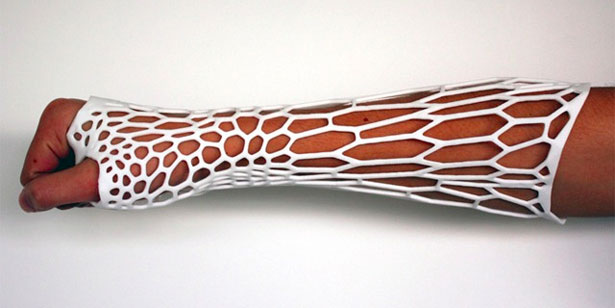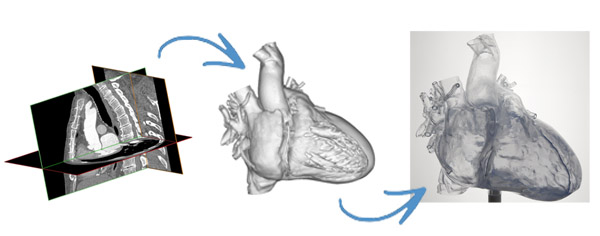Coming straight from Deakin University’s School of Engineering, a group of innovative students have released a new report detailing their experimentation with 3D printed, biocompatible enclosures for microdevices. The project, headed by Scott Adams, Abbas Kouzani, Mazher Mohammed, Clara Usma, and Susannah Tye (
The team designed these physical casings through CAD program  The first rectangular shape, is a two-piece design that, when put together, creates an inner cavity for the microdevice to be housed. The objective of this particular design was to create the most simple, easy-to-print encasing that would still be functionally implantable. The second design, which is an altered, more rounded version of the original, was created with the actual implanting in mind. This design is rounded in order to soften the sharp edges from the first prototype, allowing the encased microdevice to travel to it’s destination with causing any damage. This second prototype was still closed in the same manner as the first, with a flat lid that holds the DBS device within the inner cavity. The last design that the team produced is completely cylindrical in shape, creating a one piece case that requires no separately printed lid. By removing the lid from the design there are less parts to be sealed up, which, in turn, should provide the microdevice with better isolation from the surrounding brain tissue.
The first rectangular shape, is a two-piece design that, when put together, creates an inner cavity for the microdevice to be housed. The objective of this particular design was to create the most simple, easy-to-print encasing that would still be functionally implantable. The second design, which is an altered, more rounded version of the original, was created with the actual implanting in mind. This design is rounded in order to soften the sharp edges from the first prototype, allowing the encased microdevice to travel to it’s destination with causing any damage. This second prototype was still closed in the same manner as the first, with a flat lid that holds the DBS device within the inner cavity. The last design that the team produced is completely cylindrical in shape, creating a one piece case that requires no separately printed lid. By removing the lid from the design there are less parts to be sealed up, which, in turn, should provide the microdevice with better isolation from the surrounding brain tissue.
In order to test the quality of these different microdevice enclosures, the team executed both a submersion test and an operation test. The submersion test was performed in order to test the potential leak vulnerabilities in the casings. First, the team put a piece a paper inside the cavity (obviously not wanting to damage the actual DBS microdevice with this initial test); then, they submersed the individual prototypes under 10 centimeters of water for a few hours. They happily discovered that their designed enclosures did indeed completely seal the inner cavity, thus, keeping the paper inside completely dry and moisture-free. Once the encasing was proven to be water-proof, the operation test was performed to discern whether the actual DBS device would function when submerged. After sealing the device within the various designs, the team ran wires from the device to a coin cell battery and submerged the encasing once again. Like the submersion test, the operation test also proved to be successful, proving that the DBS device could still function properly when submerged underwater.
 The conclusion that this team of engineers reached was that these 3D printed enclosures did, in fact, work perfectly as a biocompatible protection system for the DBS device. This experiment offers endless potential for the implanting of these DBS microdevices, in big part thanks to the 3D printed silicone material, which solves the biocompatible problems that have hindered the progress of the implanted DBS microdevice for quite some time now. It will be interesting to see how the applications of 3D printing will continue to aid the team in creating biocompatible enclosures, especially when they eventually find a way (literally) into our heads!
The conclusion that this team of engineers reached was that these 3D printed enclosures did, in fact, work perfectly as a biocompatible protection system for the DBS device. This experiment offers endless potential for the implanting of these DBS microdevices, in big part thanks to the 3D printed silicone material, which solves the biocompatible problems that have hindered the progress of the implanted DBS microdevice for quite some time now. It will be interesting to see how the applications of 3D printing will continue to aid the team in creating biocompatible enclosures, especially when they eventually find a way (literally) into our heads!
